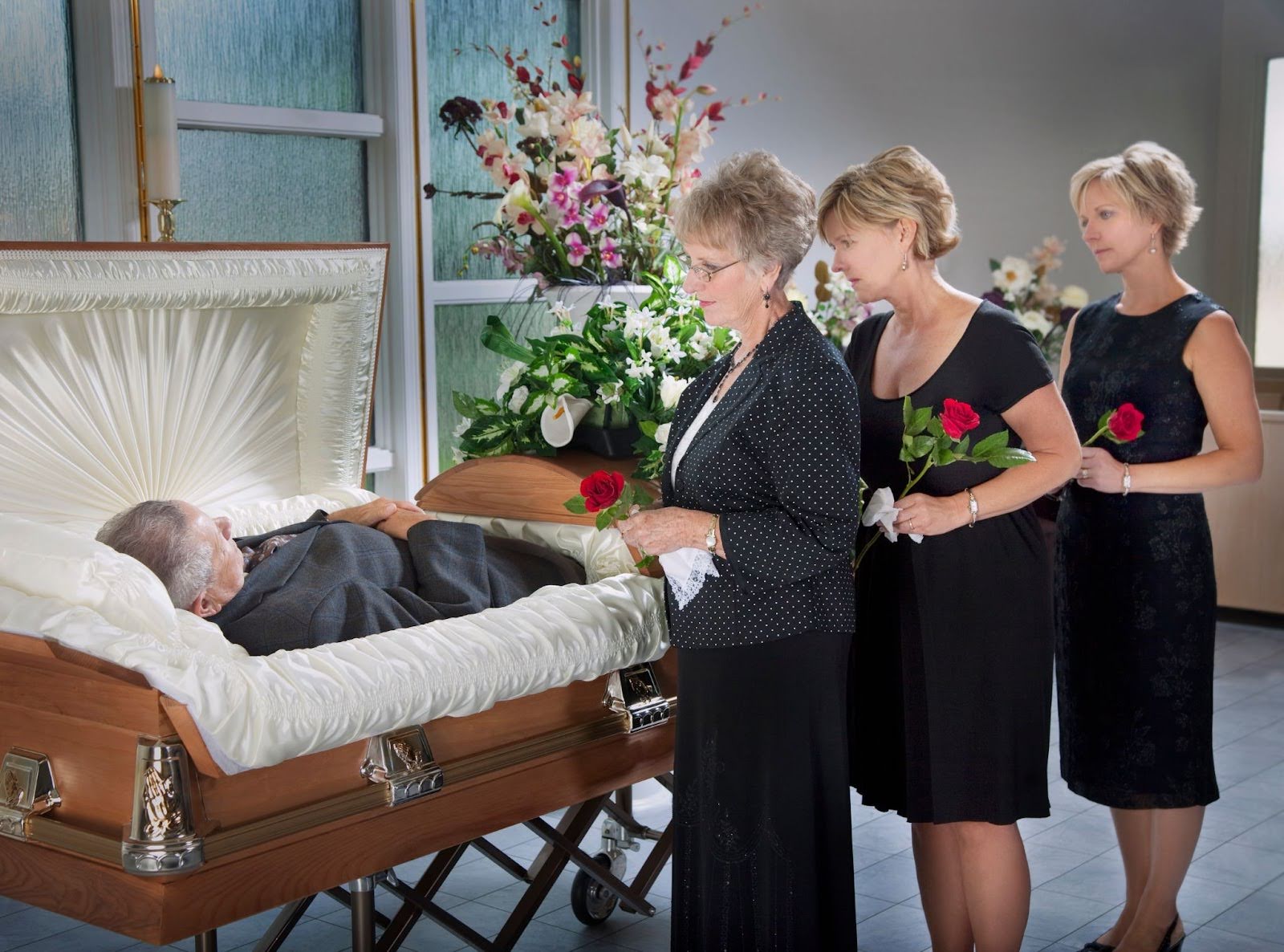What is an Open Casket Funeral?

An open casket funeral is a type of service where the body of the deceased is displayed for mourners to view before burial or cremation. For those unfamiliar, an open casket funeral provides a final chance for loved ones to see the deceased, say goodbye, and find closure.
In most cases, the casket is open during a portion of the visitation or service, allowing guests to approach and pay their respects. Open casket funerals are often chosen for their emotional significance, helping loved ones begin the grieving process with a sense of connection and closure.
Planning a service like this often begins with guidance from a funeral home, where staff help families decide whether an open casket is appropriate based on cultural traditions, emotional readiness, and the condition of the body. Some religious practices fully embrace this tradition, while others may discourage or avoid it altogether.
Ultimately, the decision to hold an open casket funeral is personal and should reflect the wishes of the family and the individual being honored.
How is the Body Prepared for an Open Casket Funeral?
Preparing a loved one for an open casket funeral viewing involves a careful and respectful process carried out by trained professionals. Funeral homes focus on preserving the body’s appearance, providing families with a peaceful and dignified final image that reflects their loved one’s memory.
Embalming and Preservation
The most common method of preparation is embalming, a process that temporarily preserves the body and slows natural changes after death. Embalming involves replacing bodily fluids with a chemical solution to maintain the appearance of the deceased, especially when there will be a public viewing several days after passing.
In some cases, refrigeration may be used instead of embalming. This method is typically chosen when the viewing takes place within a shorter timeframe or when families prefer not to embalm for personal, cultural, or religious reasons.
Cosmetic and Clothing Preparation
Once preservation is complete, the body is carefully groomed and dressed. Funeral staff may apply makeup, style the hair, and select clothing based on instructions from the family. These cosmetic touches are intended to create a calm, lifelike appearance that helps loved ones feel comforted during the viewing. Some families bring in specific outfits or personal items, while others leave the decisions to the funeral director’s discretion.
When an Open Casket Might Not Be Possible
There are circumstances where an open casket may not be a suitable option, such as:
- If the body experienced significant trauma
- If preservation was not performed shortly after death
- If religious or cultural beliefs discourage or prohibit viewing the deceased
In situations where an open casket is not possible or preferred, families may choose alternatives like direct cremation. This option allows for a respectful farewell without a traditional viewing and can be followed by a memorial service at a later time.
Why Do People Have Open Casket Funerals?
Choosing between an open or closed casket funeral is often influenced by emotional needs, religious beliefs, and cultural traditions. For many families, open casket funerals offer a meaningful opportunity to honor their loved one’s life in a way that feels personal and complete.
Emotional and Psychological Benefits
One of the main reasons families choose an open casket service is the emotional comfort it can provide. Seeing the deceased one final time gives mourners a sense of closure that can help ease the initial stages of grief. Being able to say a proper goodbye face-to-face often makes the loss feel more real and allows loved ones to start processing their emotions in a healthy way.
In some cases, the peaceful appearance of the deceased during an open casket funeral viewing can replace painful last memories with a more serene and comforting image.
Religious and Cultural Traditions
Religious and cultural practices play a strong role in decisions about open-coffin funerals. In many Christian and Catholic traditions, open casket viewings are common and are seen as a way to honor the body before burial. Similarly, some Buddhist ceremonies include viewings to help mourners reflect on impermanence and the cycle of life and death.
On the other hand, Jewish and Muslim traditions typically prefer closed casket services or no viewing at all, emphasizing the importance of modesty and a quick burial after death. Family wishes, religious guidelines, and cultural values all come together to shape the decision that feels right for each situation.
What Happens During an Open Casket Funeral?
An open casket funeral typically follows a structured sequence designed to give loved ones time for reflection, visitation, and farewell. The service often begins with a private or public viewing, where the deceased is displayed in the open casket for mourners to approach and pay their respects. Family and close friends may spend quiet moments near the casket before the formal funeral service begins.
After the initial visitation, a traditional ceremony takes place. This may include prayers, eulogies, music, or readings that celebrate the life and legacy of the person who has passed. During the service, guests might be invited to view the casket again before it is closed for burial or cremation.
How to Prepare for an Open Casket Viewing
Attending an open casket service can stir strong emotions. If you are wondering how to prepare for a viewing funeral, here are a few tips to keep in mind:
- Expect some changes in appearance: Embalming and cosmetic preparations are used to create a peaceful final image, but the deceased may look slightly different from how you remember.
- Understand etiquette near the casket: While placing a hand on the casket might be allowed, touching the body is typically discouraged unless the family indicates otherwise.
- Be respectful of others: Allow grieving attendees the privacy and time they may need near the casket without feeling rushed.
It can also be helpful to understand the broader structure of funeral events if this is your first time attending. You can learn more about what typically happens during services by visiting our guide on memorial services. Preparing mentally ahead of time can help you approach the experience with empathy, patience, and compassion.
Open Casket vs. Closed Casket: Making the Right Choice
Choosing between an open casket and a closed casket funeral often depends on a combination of personal, cultural, and emotional factors. Each option offers its own form of comfort and reflection for families.
In some cases, practical considerations also play a role. According to California Healthline, approximately 39% of funeral homes in the United States operate their own crematories, offering families more choices around services that may or may not involve formal viewings. Many funeral homes provide options for cremation without a traditional ceremony where the body is present, allowing flexibility based on family preferences and budget.
Understanding the differences between open and closed casket services can help you make the decision that best honors your loved one’s wishes and supports the grieving process.
When to Choose an Open Casket
An open casket may be the right choice when:
- Families feel a final viewing will help provide emotional closure.
- The deceased had specifically requested an open casket in their funeral plan.
- Cultural or religious customs encourage or require open casket ceremonies.
Seeing the deceased one last time can offer a sense of peace for many mourners, helping them begin the healing process with a meaningful goodbye.
When to Choose a Closed Casket
A closed casket may be preferable when:
- The body is not suitable for viewing due to trauma or medical conditions.
- The deceased or family prefers to maintain privacy.
- Religious customs require a closed casket, as in certain Jewish and Muslim traditions.
Ultimately, the decision should be based on what feels most respectful to the memory of the deceased and most comforting to those they leave behind.
Considerations for Open Casket Funerals
Planning ahead can make a difficult time a little easier for families facing funeral decisions. Whether you are considering an open casket funeral or another type of service, working with a trusted funeral home helps ensure the process is respectful, meaningful, and aligned with your wishes. Funeral directors can guide families through each step, from body preparation to the final arrangements, providing support during an emotional time.
It is important to have conversations with your loved ones about your end-of-life preferences, including whether you would want an open casket viewing, a closed casket service, or another memorial option. Clear communication can relieve your family from having to make difficult decisions during a time of grief.
If you’re considering alternatives to a traditional funeral, at MERI, we offer resources to help you explore meaningful options that reflect your values. One such choice is Whole Body Donation, which contributes directly to advancing medical science and training future healthcare professionals. For many, the decision to donate your body to science is both a generous final act and a practical way to reduce funeral costs for loved ones.
By planning thoughtfully today, you can create a legacy that brings comfort, healing, and lasting meaning for those you leave behind.
